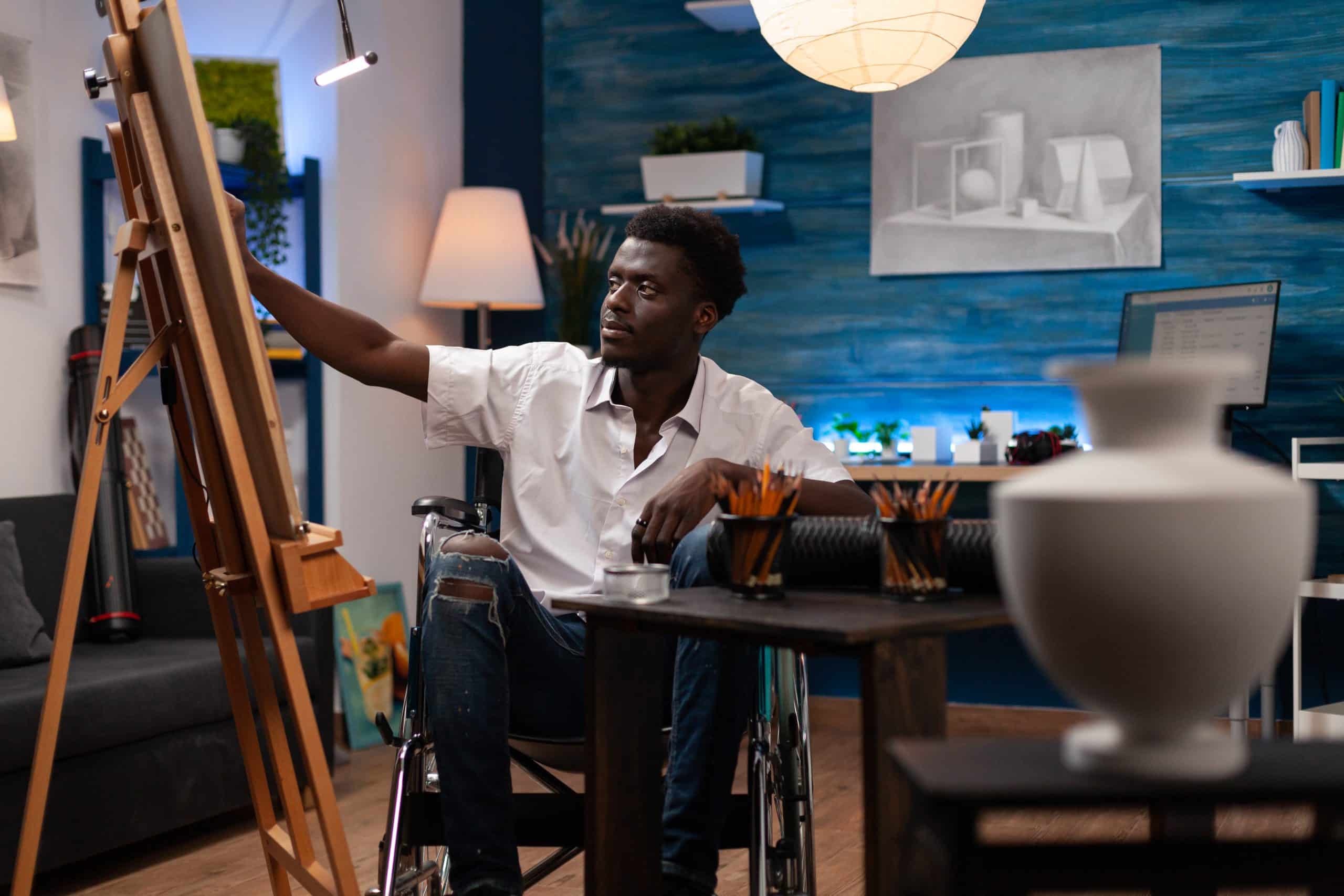Artists and crafters, you know better than anyone that your creative process can often feel like organized chaos. You’re continually juggling a wide array of tools, materials, supplies, and works-in-progress, all while trying to keep the creative juices flowing. However, having a dedicated space for your art and craft projects can help streamline your work process and inspire even greater levels of creativity.
The key to creating this space is considering factors like storage, lighting, design, and furniture, and how they can be tailored to suit your specific needs. Ultimately, the goal is to create an environment that sparks your imagination every time you enter it.
Cela peut vous intéresser : How to Plan a Home Addition That Enhances Living Space Without Overshadowing the Original Structure?
Space and Design
When it comes to space and design, it’s not about how much room you have; it’s about how you use it. You might be working with a whole studio, a small room, or even a corner of your living room, but with the right planning and design ideas, you can create an art space that is functional, inspiring, and uniquely yours.
The first step is to define your space. If you’re fortunate enough to have a whole room or studio, great! But if not, don’t despair. Use furniture or screens to carve out a dedicated area within a larger room. The important thing is that you have a space that you associate with creativity, a place where you can focus on your work without interruption.
A lire aussi : What Are the Best Plant Choices for a Low-Maintenance but Vibrant Indoor Garden?
Next, consider the design of your space. Use wall color, art, and other decorative elements to create an environment that inspires you. Consider how you want to feel in your space: calm, energized, happy, focused? Choose colors and decor that evoke these feelings.
Creative Storage Solutions
Now that you’ve defined your space and designed it, let’s think about storage. Creative storage solutions will not only keep your room tidy, but they can also become a part of the room’s decor.
Start by taking an inventory of your materials and supplies. What do you have, and how often do you use it? This will help you determine what type of storage you need and where it should be located.
Next, consider using wall space for storage. Shelves, pegboards, and wall-mounted bins can keep materials off your work surface while keeping them within reach. Clear or labeled containers can make it easy to find what you need.
Don’t forget about furniture that can double as storage, like a coffee table with drawers or a bookcase with bins. These can keep your supplies organized while adding to the overall design of the room.
Lighting That Inspires
Lighting plays a significant role in any workspace, especially one dedicated to art and craft projects. Lighting not only impacts how you see your work but can also boost your mood and energy levels.
For the best lighting, try to take advantage of natural light as much as possible. Position your workspace near a window, or consider installing skylights if you have a dedicated studio. Natural light offers the most accurate color rendering, which is crucial for artists.
However, since you can’t rely on natural light alone, also consider task lighting for specific work areas. Adjustable lamps can provide targeted light where you need it, reducing eye strain and improving precision.
Craft Furniture That Works
Lastly, let’s talk about furniture. The furniture you choose for your art and craft space should be functional, comfortable, and suited to your work style.
A good work table is a must. It should be large enough for your projects but not so large that it dominates the room. Adjustable height tables can be very useful, allowing you to work standing or sitting as preferred.
Comfortable seating is also essential. Look for a chair that offers good support, especially if you’ll be sitting for long periods.
Finally, consider other furniture pieces like carts, which can provide mobile storage, or an easel, if you do a lot of painting. Whatever furniture you choose, remember that it should serve your creative process, not hamper it.
The Art of Organization
Creating a dedicated space for your art and craft projects is more than just a practical endeavor; it’s an art in itself. It’s about creating an environment that supports your work, sparks your creativity, and inspires you to create every time you step into it. It’s about arranging your materials and tools in a way that not only makes them easy to find and use but also pleases your eye and feeds your creativity. Ultimately, it’s about making a space that feels uniquely yours, a space that you look forward to spending time in, day after day.
Remember, there’s no right or wrong way to create your art space. It’s all about finding what works for you. So, get creative, try different things, and most importantly, have fun with it. After all, this is your space for creation.
Maintenance and Cleanliness
Maintaining a clean and organized workspace is an integral part of keeping your creative juices flowing. An untidy space often leads to distractions and inhibitions in the creative process. Therefore, it’s important to incorporate habits of maintenance and cleanliness in your art and craft area.
Start by setting up a routine to clean your space after every use. This simple habit will save you from the disheartening sight of a messy workspace the next time you begin a project. It will also extend the lifespan of your tools and materials, ensuring they are always ready for use.
Invest in a good quality trash bin and recycling container. Having these easily accessible will encourage you to regularly dispose of scraps and waste materials. Also, consider using a dust cover for your work table or other vital locations to protect them from dust and spills when they are not in use.
It’s also crucial to implement a system for maintaining your tools. Regularly check for wear and tear, clean brushes and equipment after use, and store them properly. Good maintenance practices will keep your tools in optimal condition and prevent unexpected interruptions due to broken or unusable equipment.
Personal Touches
Your art and craft workspace should reflect your personality, interests, and inspirations. Adding personal touches to your workspace can make it more inviting and inspiring. This could be photographs, keepsakes, or any item that brings joy and inspiration.
Decorating your space with your previous creations is another effective way to personalize your workspace. Displaying your own work not only adds a unique aesthetic to the room but also serves as a reminder of your creative journey and achievements.
Plants can also be an excellent addition to your workspace. Not only do they purify the air, but they also create a calming and refreshing atmosphere, which can be very beneficial for creative work.
Remember, these personal touches are not mere decorations; they contribute to the overall ambiance of the space, influencing your mood and creativity.
Conclusion
Creating a dedicated space for art and craft projects is a unique journey, much like the creative process itself. It involves understanding your needs, planning, and implementing ideas that work for you. This dedicated space becomes an extension of your creativity, where ideas take shape and transform into reality.
By focusing on space and design, storage solutions, lighting, functional furniture, cleanliness, and personal touches, you can create an inspiring, functional, and uniquely yours workspace. Always remember, this is your personal space for creation – make it as unique and inspired as your creative journey.
Above all, enjoy the process. Experiment with different ideas, rearrange when necessary, and always keep the space evolving with your creative journey. This dedicated art and craft space is not merely a physical location; it’s where your imagination comes to life. Let it inspire and motivate you towards greater creative heights.











